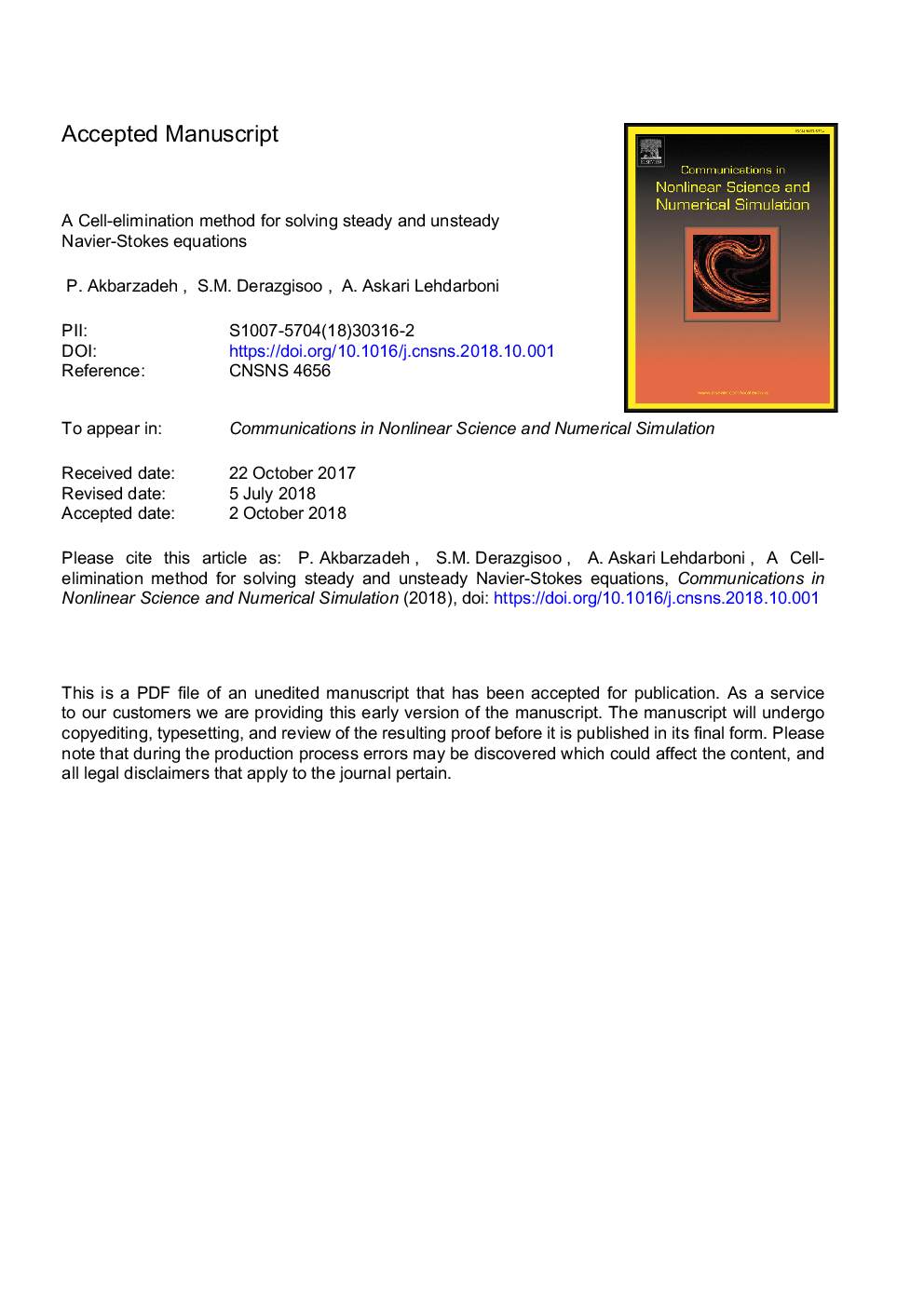| Article ID | Journal | Published Year | Pages | File Type |
|---|---|---|---|---|
| 11023560 | Communications in Nonlinear Science and Numerical Simulation | 2019 | 31 Pages |
Abstract
In this study, a highly efficient approach for solving steady and unsteady incompressible flows (with\without cavitation) is introduced to reduce the numerical computational cost for the first time. This approach is called Cell-Elimination Method (CEM). CEM is organized based on the concept of sparse matrix solvers and it removes useless cells in a computational domain (i.e. cells which are reached their suitable value). In the present study, CEM is applied to the combination of well-known Jameson's cell-centered finite volume numerical method and the progressive power-law preconditioning approach. To achieve the steady state solution, the equations are integrated in time using an explicit four-stage Runge-Kutta scheme with local time step. For unsteady problems a dual-time implicit algorithm is applied to obtain time-accurate solutions. Since for the use of CEM, it is essential to understand the Local Error variation through iteration, an error study is done over a typical test case. The simulations focus on steady and unsteady flows over hydrofoils (with\without cavitation). Despite the simplicity of CEM's concept, results show acceptable accuracy and a remarkable computational cost reduction.
Keywords
Related Topics
Physical Sciences and Engineering
Engineering
Mechanical Engineering
Authors
P. Akbarzadeh, S.M. Derazgisoo, A. Askari Lehdarboni,
